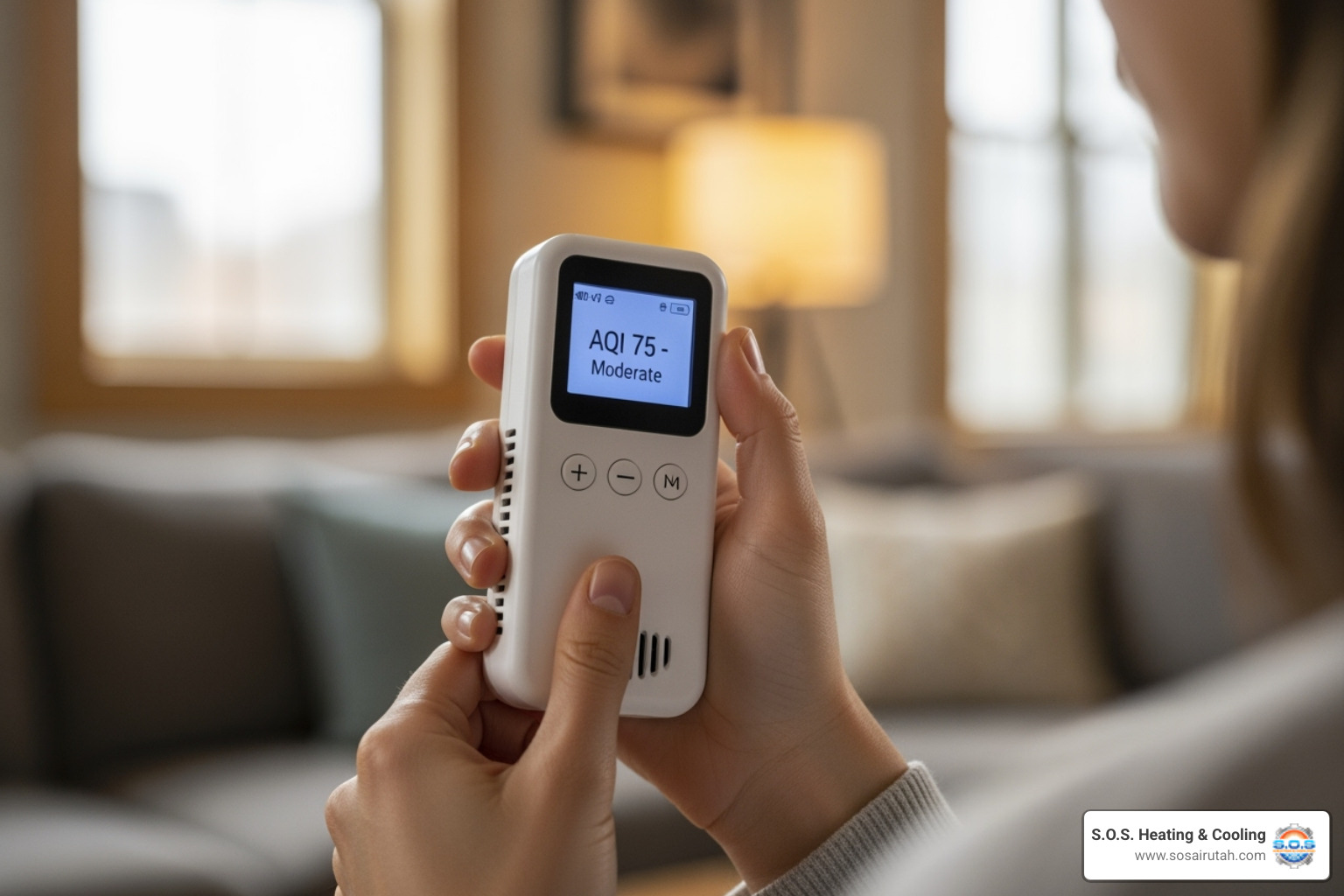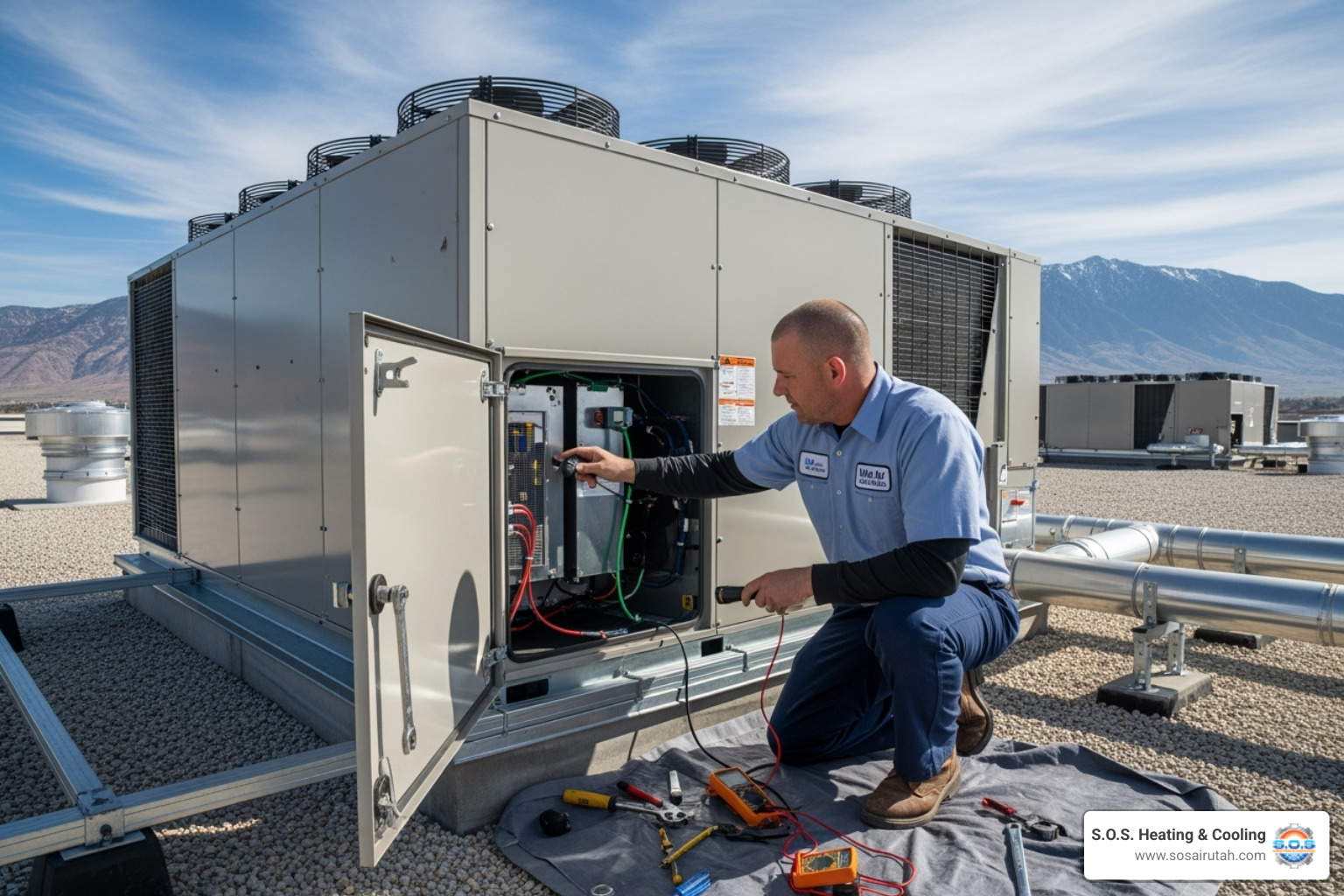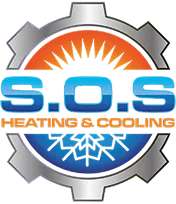
When your air conditioner isn’t cooling properly, the temperature sensor could be part of the problem. Homeowners in Salt Lake City often overlook this small component, but the sensor plays a big role in how your AC system works. It tells the system when to turn on and off depending on the room’s temperature. If it starts acting up, your cooling might become uneven, inconsistent, or even stop altogether.
Late August in Salt Lake City is still warm enough to need reliable cooling, so when things go off track, it becomes frustrating quickly. Maybe your AC runs non-stop without cooling the house, or it shuts off too early. That can leave your home uncomfortable at the worst time of the year. These types of problems are often traced back to a faulty temperature sensor, and catching them early makes a big difference in staying comfortable through the last stretch of summer.
Understanding AC Temperature Sensors
The temperature sensor in your AC system monitors the air blowing across the evaporator coil and keeps your system working based on your settings. It’s there to make sure the system turns on when needed, keeps cooling when it should, and stops when the desired temperature is reached. If the sensor isn’t working as it should, the system can’t cool your home the right way.
This sensor sends signals to the control board, telling it when the air is warmer or cooler than the thermostat setting. When everything works correctly, you get steady, even airflow and comfort throughout every room. But once the sensor goes off track, it can start giving inaccurate readings, which causes the entire system to react incorrectly. For example, it might read that the room is cooler than it really is, which can lead to the AC shutting off too soon.
Sensors are usually mounted near the evaporator coil inside the air handler. Over time, they can shift out of place or become less responsive. A slight bend or misalignment of the sensor can throw off the readings. The summer heat can push AC systems harder than usual, making even small sensor issues more noticeable.
One Salt Lake City homeowner noticed uneven temperatures in the house, with some spaces staying warm while others were chilled. After having it checked, the issue came down to a damaged sensor that was not reading the coil temperature properly. Fixing it quickly solved the problem and brought the system back to normal.
When you count on your cooling system during high temperatures, having a working sensor is key to balanced, efficient performance. Trouble starts when it no longer gives accurate feedback, leading the system to operate out of sync with your comfort needs.
Common Problems With Temperature Sensors
Even small problems with the AC temperature sensor can affect how the whole system works. These issues tend to develop quietly and may seem like they’re coming from a different part of the system. If your thermostat seems right and your AC unit itself isn’t damaged, the sensor is worth a closer look.
Here are some signs that the sensor is causing problems:
- The AC turns off before the home reaches the selected temperature
- The system runs longer than expected but rooms stay warm
- You notice changes in temperature across different rooms
- The AC starts and stops frequently without maintaining cool air
- There's a long delay before the system kicks on after being set
Common problems with the sensor include:
1. Incorrect placement – If the sensor shifts out of position, it could read air temperature too low or too high, causing erratic AC behavior
2. Wiring issues – Loose or damaged wiring can lead to weak signals or no signal at all being sent to the system controls
3. Calibration problems – Sensors can lose accuracy over time, causing the AC system to misread the room conditions
4. Sensor damage – Overheating, corrosion, or wear can lead to failure in the sensor's performance
These problems aren’t always obvious at first, but they grow worse as the system continues to rely on faulty input. If the sensor thinks your house is already cool, it won’t order the AC to run, even when it’s clearly still warm. On the other hand, if it registers higher temperatures when it’s actually cool inside, it could cause the air conditioner to overrun and waste energy.
Homeowners in Salt Lake City continue to rely on cooling through late August, so it’s important to pay attention to sudden changes in comfort levels. Even if your AC seems generally functional, an underperforming sensor can make your home feel off-balance.
Basic Troubleshooting Steps For Homeowners
If you suspect your AC system isn’t responding properly, a misaligned or dirty sensor might be the issue. While full repairs should always be left to our professionals, there are a few visual checks that can help narrow down whether the sensor might be struggling. Always turn off the power to your unit before performing any visual inspection.
Here are some useful steps for homeowners to take:
- Look for the sensor near the evaporator coil and see if it’s close to the coil surface without touching it
- Check if the sensor is slightly bent or moved from its normal position
- Inspect for dirt, dust, or buildup on or around the sensor, which may affect function
- If you're comfortable accessing your thermostat settings, look for signs of a large gap between actual temperature and your setpoint
- Turn off the system at the breaker panel and turn it back on to see if a reset clears out any minor inconsistencies
These steps won’t fix the sensor itself, but they can provide a better picture of what might be wrong and whether a professional check is needed. If nothing changes after a reset, or the AC continues to behave unpredictably, it’s a good idea to have it inspected by our trained technicians. Sensors are small, but the role they play is central to keeping a reliable indoor temperature. Fixing small issues early avoids bigger repair bills later.
Importance of Professional Diagnosis and Repair
While it might seem like an easy fix, diagnosing sensor problems correctly requires the right knowledge and tools. A temperature sensor that’s slightly off can cause your AC system to act in ways that mimic other issues. Without accurate testing, it's easy to mistake a failing sensor for a failing thermostat, compressor, or circuit board. Repairing the wrong part can lead to more frustration and added costs.
Having the system checked by our professionals ensures the problem is identified the right way. They know how to locate the sensor, test its response, and check for wiring faults or calibration errors. In most systems, the sensor is not something that should be bent, pushed, or reinstalled without the proper tools. Damage during a DIY repair attempt can lead to greater problems.
Here’s how our professionals support a safe and accurate repair:
- Use advanced instruments to measure the sensor’s accuracy
- Identify any hidden wiring issues that aren’t easy to see
- Rule out other problems affecting your comfort, like fan speed or refrigerant level
- Realign or replace the sensor the correct way without damaging surrounding components
- Spot and fix early signs of AC wear affecting more than just the sensor
With high demand on cooling systems during August in Salt Lake City, any repair needs to be done right the first time. Replacing the wrong part adds time, cost, and discomfort. Letting our technicians inspect the full system avoids guesswork and helps restore comfort quickly.
Prevent Sensor Issues With Routine AC Maintenance
For most homeowners, the best way to avoid AC temperature sensor problems is through regular maintenance. Like many small HVAC parts, sensors aren’t built to last forever. Their performance fades from dirt buildup, exposure to moisture, or steady vibration inside the system. Slow changes like these can go undetected until they begin affecting comfort.
That’s why consistent AC maintenance in Salt Lake City makes a noticeable difference. Our technicians check all system components, including sensors, during seasonal tune-ups. If a sensor needs adjustment or replacement, finding that issue early helps prevent mid-season breakdowns.
Here are a few habits that support a smooth-running cooling system:
- Replace filters regularly, since clogged filters affect airflow and temperature control
- Stay consistent with seasonal maintenance, especially at the start and end of summer
- Keep the area around indoor and outdoor units clean and clear of debris
- Pay attention to odd sounds or uneven cooling and report it early
- Avoid tampering with thermostat or sensor wiring
One homeowner in Salt Lake City scheduled a summer inspection after dealing with repeated system resets. During the tune-up, our technician found that the sensor had shifted out of place from vibration over time. A small correction got the system back on track and avoided major disruption.
These routine checks not only protect comfort but also help lower energy costs and extend the unit’s life. Each part, even a small sensor, plays a role in steady, efficient cooling during peak summer temperatures.
Ensuring a Comfortable Summer in Salt Lake City
With temperatures staying high through late August in Salt Lake City, your AC system plays a big part in keeping your living space comfortable. If your temperature sensor isn’t working properly, the whole system becomes unreliable and your home can feel inconsistent. Whether it’s shutting off too early, running longer than expected, or producing uneven air, these are signs that warrant attention.
Temperature sensor problems don’t always stand out immediately. But once cooling becomes unpredictable, or energy bills start to rise, the impact becomes noticeable. Staying on top of routine care, watching for small warning signs, and reaching out to our technicians when needed helps reduce major interruptions.
Your cooling system is built to respond automatically, using sensors to guide performance. When that process breaks down, indoor comfort suffers. Getting these issues addressed quickly helps keep your home steady, your AC system dependable, and your cooling bills more manageable.
Proper upkeep can make all the difference when sensor issues affect your AC's performance during the warm late summer days in Salt Lake City. Let S.O.S. Heating & Cooling help keep your home comfortable by exploring AC maintenance in Salt Lake City to ensure your cooling system runs smoothly and efficiently. For a quick estimate or to book a service visit, please contact us today.
Explore Our Latest Insights and Updates in Plumbing Services

Salt Lake City Home Air Quality: What You Need to Know About Testing

When Your Water Heater Quits: Emergency Repair Solutions for Utah Homes

Stay Productive with Expert Commercial AC Maintenance for Utah Businesses






.avif)